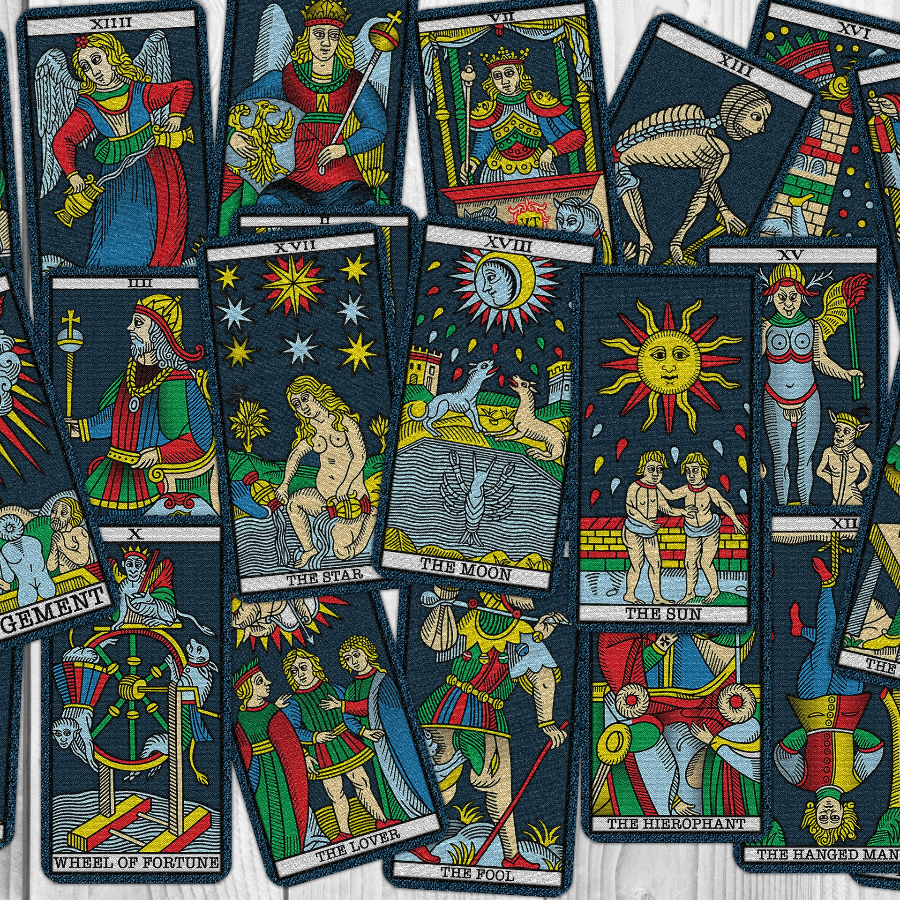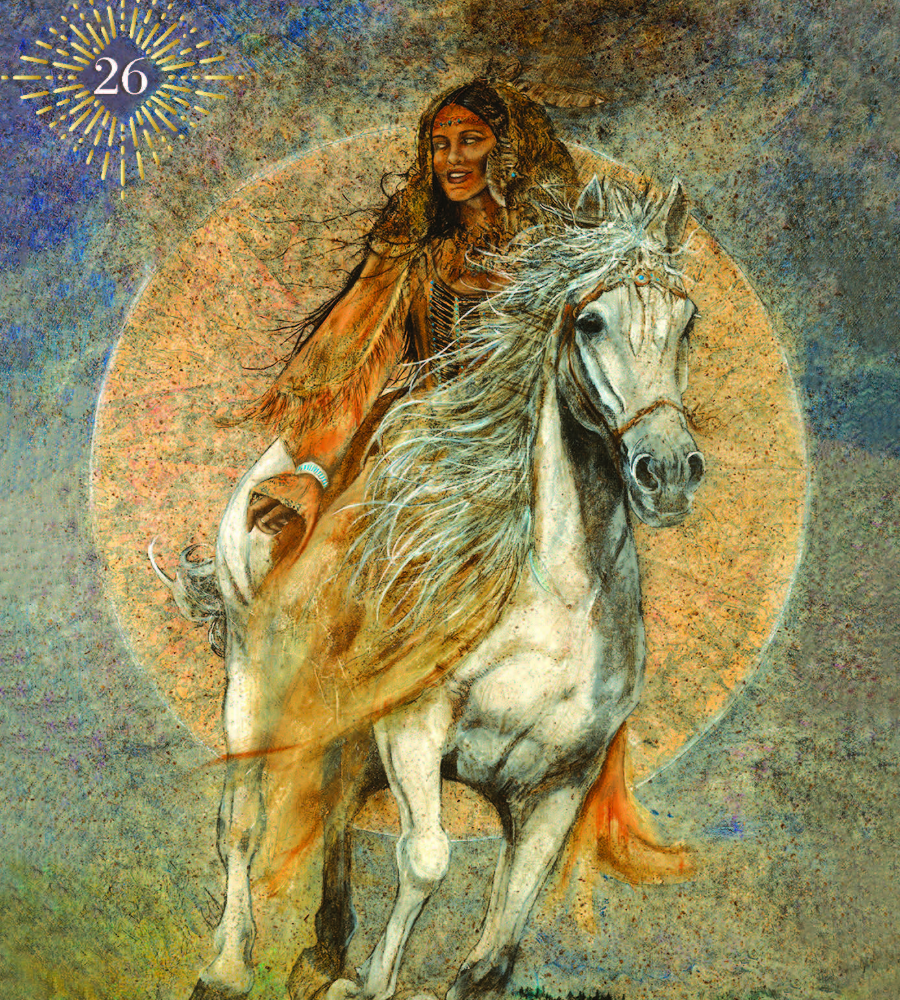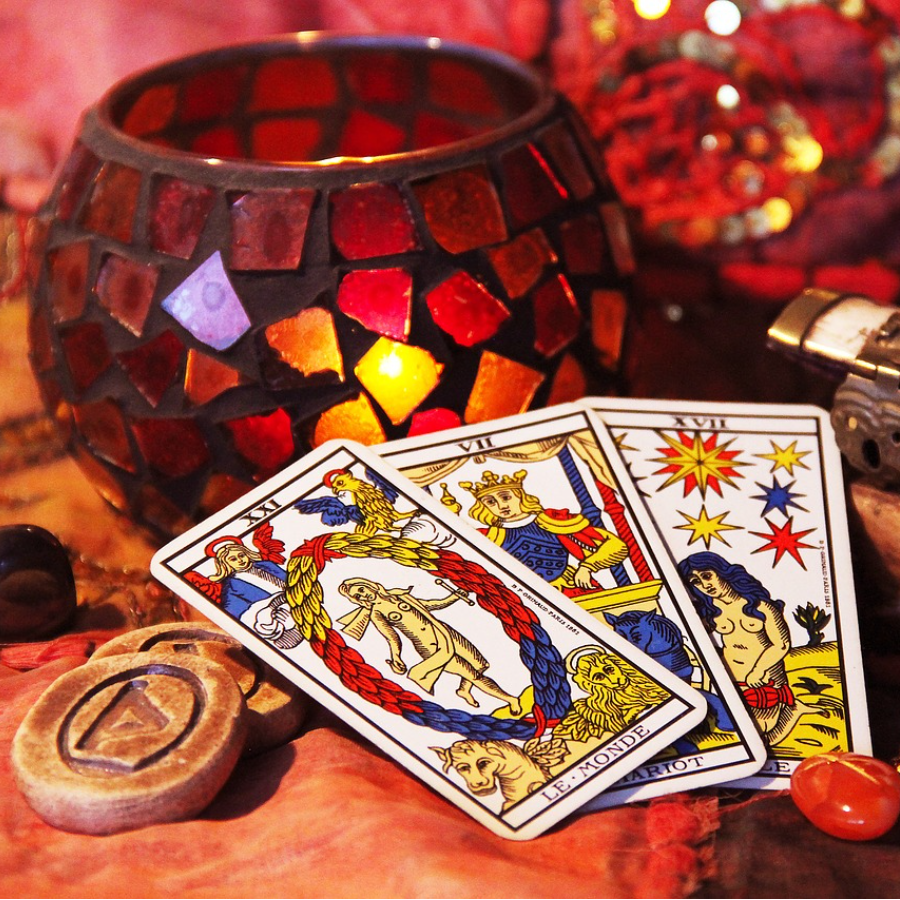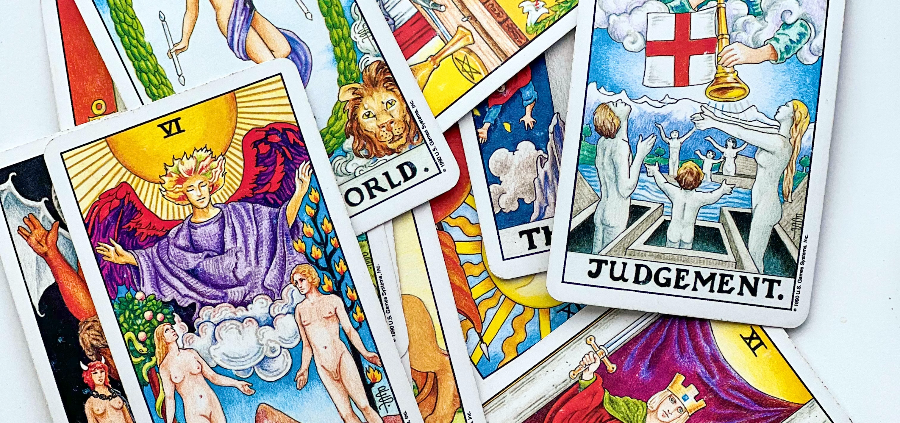How to read Tarot cards?
First, let’s have a look at what is the history of tarot cards.
The history of tarot cards is a fascinating journey that spans several centuries. The origins of tarot cards can be traced back to the 14th century in Europe, specifically in Italy. According to historians, the earliest known deck is the Visconti-Sforza Tarot which was created around 1440. This early tarot deck was primarily used for playing card games rather than for divination purposes.
Tarot cards hold hidden meanings
It wasn’t until the 18th century that tarot cards began to be associated with mystical and esoteric practices. In 1781, a French occultist named Antoine Court de Gébelin published a work suggesting that tarot cards held hidden meanings and could be used for divination. This idea gained traction and laid the foundation for the tarot’s connection to the occult.
In the late 19th and early 20th centuries, influential figures such as Arthur Edward Waite and Pamela Colman Smith collaborated to create the Rider-Waite Tarot, which became the most popular and widely recognized tarot deck. This deck introduced innovative symbolism and imagery that influenced subsequent tarot designs.
Today, tarot cards continue to be utilized for various purposes, including personal reflection, spiritual guidance, and fortune-telling. They have become an enduring tool for introspection and exploration of the human psyche.
The famous Marseille Tarot deck
The Marseille Tarot deck is one of the oldest, most used, and most influential tarot decks in existence. It has its origins in the city of Marseille, France. The exact origins and early history of the Tarot of Marseille are somewhat obscure, but it is believed to have emerged in the 17th century, although some sources suggest earlier origins in the late 15th century.
The deck’s design and structure are rooted in the Italian tradition of playing cards, specifically the Tarot of Bologna and the Tarot of Milan. It features a standardized set of 78 cards divided into the Major Arcana and the Minor Arcana, consisting of four suits: Cups, Coins (also referred to as Pentacles or Discs), Swords, and Batons (also known as Wands).
The Tarot of Marseille gained popularity throughout Europe and became a prominent tool for divination and esoteric practices. Its distinctive style, characterized by bold lines, minimalistic artwork, and absence of scenic backgrounds, influenced the development of subsequent tarot decks.
Today, the Tarot of Marseille remains a cherished and widely used tarot deck, valued for its historical significance, rich symbolism, and deep esoteric connections. Numerous variations and reproductions of the original Marseille deck can be found worldwide.

What are the different types of tarot cards and what’s the difference between Tarot cards and Divination cards?
You will find thousands of different types of Tarot and Divination or Oracle cards, each of them having their own and unique design, packs, books, you name it.
Tarot cards come in a structured deck usually of 78 cards where as oracle cards are a bit more free flowing and can have any content and any number of cards.
Tarot decks typically consist of 78 cards divided into the Major Arcana (22 cards) and the Minor Arcana (56 cards).
Each card has a specific set of meanings and symbolism often rooted in esoteric traditions, archetypes, and numerology.
Tarot readings often involve complex spreads and layouts, where the cards are placed in specific positions to provide insights into past, present, and future events.
Divination cards come in various forms and structures. They can range from decks with a few cards to those with a larger number of cards, depending on the specific deck. They can be based on different systems, including ancient wisdom, angelic guidance, animal spirits, or intuitive messages. They are often created with a specific purpose or theme in mind.
Some examples of the most popular divination card decks
Angel Oracle Cards: often featuring serene and ethereal artwork depicting angels, with messages of guidance, inspiration, and spiritual support.
Animal Spirit Cards: showcasing various animals(from various parts of the world) and their symbolism, offering insights into the qualities, energies, and lessons associated with each animal spirit.
Goddess Oracle Cards: celebrating the divine feminine and depict powerful goddess figures from different mythologies, providing wisdom, empowerment, and connection to feminine energy.
Elemental Divination Cards: representing the elements of earth, air, fire, and water, with each card embodying the essence and characteristics of its respective element.
Crystal Oracle Cards: highlighting different crystals and gemstones, their energetic properties, and the guidance they provide for healing, manifestation, and spiritual growth.
Affirmation Cards: presenting positive affirmations and empowering statements, designed to uplift and inspire individuals on their personal journeys.

Some tips on how to read Tarot cards
Tarot cards are a powerful tool for gaining insights and guidance into various aspects of life. If you’re a beginner, learning how to read Tarot cards may seem daunting, but with practice and a few simple steps, you can unlock their wisdom and intuition.
Familiarize yourself with the deck
Start by familiarizing yourself with your Tarot deck
Take time to observe each card, noting the symbols, colors, and images. Feel the energy they exude.
Set Your Intention
Before every reading, set a clear intention. Focus on what you seek guidance for and visualize the cards revealing the answers you seek.
Shuffle and draw cards
Shuffle the deck while focusing on your question or intention. When you feel ready, draw one or more cards using the spreads and methods of your choice. Trust your intuition as you select the card(s).
Interpret the card(s)
Study the imagery and symbolism on the card(s). Take note of your immediate thoughts and feelings. What message does the card(s) convey? Trust your intuition and relate it to your question.
Connect cards meaning
Learn the meanings of each card individually. Begin with the Major Arcana, which represents significant life events, and then explore the Minor Arcana.
Explore card combinations
As you become comfortable with individual card meanings, start exploring combinations. Notice how cards influence and enhance each other’s interpretations. This adds depth to your readings.
Practice self-reflection
After each reading, reflect on the cards’ messages and how they resonate with your life. You may keep a Tarot journal to record your interpretations, observations, and personal insights.
Trust your intuition
Remember, Tarot cards are a tool to tap into your intuition. Trust your inner voice and allow it to guide your interpretations. Intuition is key to unlocking the deeper meaning of the cards.
Symbolism
Each Tarot and Oracle card is rich in symbolism, with intricate artwork and distinct meanings. The symbolism draws from various esoteric and spiritual traditions, including astrology, numerology, Kabbalah, and mythology.

`
Providing an exhaustive analysis of the symbolism of every Tarot or Oracle card would be probably impossible, however, here are some general themes and symbols that can be commonly found:
Archetypes
Cards often depict archetypal figures and characters that represent universal human experiences, such as The Fool, The Magician, The High Priestess, The Emperor, The Lovers, The Hermit, and more. These archetypes embody certain qualities, traits, or stages of life.
Elements
The four elements – Earth, Air, Fire, and Water – are frequently represented in Tarot cards. Each suit of the Minor Arcana is associated with one of these elements, offering insights into different aspects of life: Pentacles/Coins (earth), Swords (air), Wands (fire), and Cups (water).
Numerology
Numbers play a significant role in Tarot symbolism. Each card in the Minor Arcana has a numerical value, and these numbers hold meaning. For instance, the Ace signifies new beginnings, the Three represents creativity and growth, and the Ten symbolizes completion.
Colours
They hold symbolic significance in Tarot cards. Different colours evoke various emotions, energies, and themes. For example, red may represent passion and action, while blue can signify calmness and intuition. The colour choices in the artwork of the cards contribute to their overall symbolism.
Imagery and Artwork
The images on cards often feature illustrations that convey specific meanings. These images combine various symbols, gestures, objects, and landscapes to represent different aspects of life, emotions, challenges, and spiritual insights.
Astrology and Planetary influences: some cards are associated with astrological signs and planetary influences. These connections align the cards with celestial energies, adding depth and layers of symbolism to their interpretations.
Seek guidance
If you feel stuck or overwhelmed, seek guidance from experienced Tarot readers, join online communities, or attend a Tarot reading workshop. Learning from others will deepen your understanding.
Practice, Practice, Practice!
Tarot reading is a skill that gets better with practice, just like anything else. Make a commitment to do regular readings for yourself and others. The more you practice, the more confident you will feel in understanding the cards.
By following these simple steps and practicing regularly, you will begin a transformative journey of Tarot card reading. Trust your intuition, embrace the symbolism, let the cards guide you toward clarity and insight, and enjoy yourself!
Check out our easy and practical Online Workshop with Shana
Introduction To Tarot Reading with Shana on 9 July 2023


